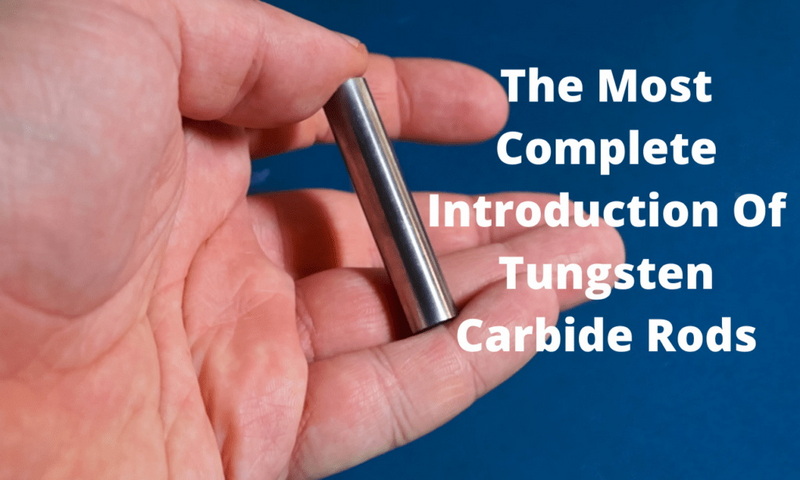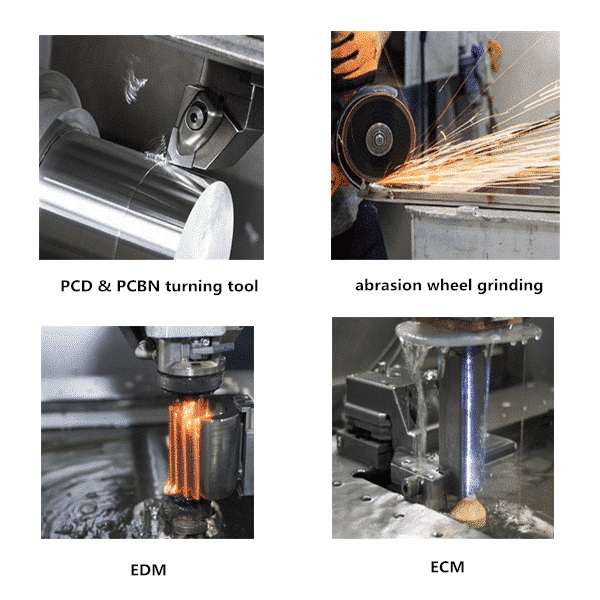Content Menu
● Understanding Tungsten Carbide
>> Properties of Tungsten Carbide
● Applications of Tungsten Carbide
● Tools Required for Cutting Tungsten Carbide Rods
● Step-by-Step Guide to Cutting Tungsten Carbide Rods
>> Step 1: Choose the Right Cutting Method
>> Step 2: Secure the Carbide Rod
>> Step 3: Mark the Cut Area
>> Step 4: Begin Cutting
>> Step 5: Check Your Cut
>> Step 6: Clean Up
● Advanced Techniques for Cutting Tungsten Carbide Rods
>> Using CNC Machines
>> Water Jet Cutting
● Safety Precautions
● Common Challenges When Cutting Tungsten Carbide Rods
>> Tool Wear
>> Heat Generation
>> Cracking or Chipping
● Conclusion
● FAQ
>> 1. What tools do I need to cut tungsten carbide rods?
>> 2. How do I secure a tungsten carbide rod before cutting?
>> 3. Why is cooling important when cutting tungsten carbide?
>> 4. Can I use regular saw blades for cutting tungsten carbide?
>> 5. What should I do if my cut has rough edges?
● Citations:
Tungsten carbide is a highly durable and hard material, widely used in various industrial applications due to its exceptional wear resistance. However, cutting tungsten carbide rods can be challenging due to their hardness, which requires specialized tools and techniques. This article will provide a comprehensive guide on how to cut tungsten carbide rods effectively, including the necessary tools, methods, and safety precautions.

Understanding Tungsten Carbide
Tungsten carbide (WC) is a compound made from equal parts of tungsten and carbon. It is known for its hardness, ranking between 8.5 and 9.5 on the Mohs scale, making it one of the hardest materials available after diamond. This property makes tungsten carbide ideal for applications such as cutting tools, mining equipment, industrial machinery, and even jewelry.
Properties of Tungsten Carbide
- Hardness: Tungsten carbide is extremely hard and resistant to scratching.
- Wear Resistance: It can withstand significant wear and tear, making it suitable for high-stress applications.
- High Density: The material's density contributes to its durability and weight.
- Corrosion Resistance: Tungsten carbide is resistant to many chemicals, enhancing its longevity in harsh environments.
Applications of Tungsten Carbide
Tungsten carbide is utilized in various industries due to its unique properties:
- Cutting Tools: Used in drills, end mills, and saw blades for machining metals.
- Mining Tools: Employed in drill bits and other equipment for extracting minerals.
- Industrial Machinery: Found in components that require high durability.
- Jewelry: Popular for wedding bands and fashion jewelry due to its scratch resistance.
Tools Required for Cutting Tungsten Carbide Rods
To cut tungsten carbide rods efficiently, you will need specific tools designed to handle the material's hardness:
- Diamond Saw Blades: These blades are essential for making precise cuts in tungsten carbide. They are designed to withstand high temperatures and provide clean edges.
- Carbide Grit Blades: Suitable for rough cuts and shaping; these blades are effective for initial cutting before finer tools are used.
- Dremel Tools with Carbide Wheels: Ideal for small-scale or intricate tasks where precision is crucial.
- Angle Grinders with Diamond Grinding Wheels: Useful for shaping and finishing cuts on tungsten carbide rods.
- Laser Cutters: For high-precision cutting without physical contact, laser cutters can be employed to achieve intricate designs.
Step-by-Step Guide to Cutting Tungsten Carbide Rods
Step 1: Choose the Right Cutting Method
Selecting the appropriate cutting method is crucial based on the desired precision and application requirements. The most common methods include:
- Diamond Cutting: Utilizing diamond-coated tools for precision cuts.
- Laser Cutting: For intricate shapes and minimal material wastage.
- Abrasive Cutting: Using abrasive materials like diamond or tungsten carbide for grinding away the rod.
Step 2: Secure the Carbide Rod
Before cutting, it is vital to secure the tungsten carbide rod to prevent movement during the process. Use a vise or clamp to hold the rod firmly in place. Ensure that it is stable but avoid applying excessive pressure that could cause cracking.
Step 3: Mark the Cut Area
Using a high-quality marker or scribe, clearly mark the area where you intend to cut. This step is essential for achieving accurate cuts and ensuring that the final product meets specifications.
Step 4: Begin Cutting
With your tools ready and the rod secured:
1. Start with a Diamond Saw Blade: Position the blade at the marked line and begin cutting slowly to maintain control.
2. Use Coolant: To prevent overheating, apply water or a specialized coolant periodically during cutting.
3. Monitor Progress: Ensure that you are following the marked line closely while maintaining even pressure.
Step 5: Check Your Cut
After making the cut, inspect it for straightness and cleanliness. If there are any rough edges, use a file or sandpaper to smooth them out.
Step 6: Clean Up
Once you have finished cutting, clean up any debris or dust generated during the process. Properly dispose of any carbide dust as it can be hazardous.

Advanced Techniques for Cutting Tungsten Carbide Rods
For those looking to enhance their cutting skills or tackle more complex projects involving tungsten carbide rods, consider these advanced techniques:
Using CNC Machines
CNC (Computer Numerical Control) machines can be programmed to cut tungsten carbide rods with high precision. This method allows for intricate designs that would be difficult to achieve manually.
1. Programming: Input your design into the CNC machine software.
2. Setup: Secure the rod in place within the machine's workspace.
3. Cutting Process: Start the machine; it will automatically follow programmed paths to cut the rod accurately.
Water Jet Cutting
Water jet cutting uses high-pressure water mixed with abrasive particles to cut through materials like tungsten carbide without generating heat that could damage the material.
1. Setup Equipment: Ensure your water jet cutter is properly calibrated and set up.
2. Positioning: Place your tungsten carbide rod on the cutting bed.
3. Initiate Cutting: Start the machine; monitor closely as it cuts through the material.
Safety Precautions
Cutting tungsten carbide rods involves risks due to flying debris and sharp fragments. Therefore, it is crucial to follow these safety measures:
- Always wear safety glasses, gloves, and a dust mask.
- Ensure proper ventilation in your workspace.
- Keep your workspace organized to avoid accidents.
- Use hearing protection if using loud machinery like grinders or saws.
Common Challenges When Cutting Tungsten Carbide Rods
While cutting tungsten carbide rods can be straightforward with proper techniques, several challenges may arise:
Tool Wear
Due to tungsten carbide's hardness, cutting tools can wear down quickly. Regularly check your tools for signs of wear and replace them as necessary.
Heat Generation
Excessive heat can cause both tool damage and material degradation. Always use coolant when cutting to mitigate this risk.
Cracking or Chipping
Improper handling or excessive force can lead to cracking or chipping of tungsten carbide rods during cutting. Always ensure proper support and avoid sudden movements.
Conclusion
Cutting tungsten carbide rods requires specialized tools and techniques due to their extreme hardness. By following the outlined steps—choosing the right method, securing the rod properly, marking accurately, maintaining safety, and employing advanced techniques—you can achieve precise cuts successfully. If unsure about your abilities or if high precision is required, consider seeking professional assistance.

FAQ
1. What tools do I need to cut tungsten carbide rods?
You will need diamond saw blades, carbide grit blades, Dremel tools with carbide wheels, angle grinders with diamond grinding wheels, or laser cutters depending on your specific needs.
2. How do I secure a tungsten carbide rod before cutting?
Use a vise or clamp to hold the rod firmly in place without applying excessive pressure that could cause cracking.
3. Why is cooling important when cutting tungsten carbide?
Cooling prevents overheating of both the rod and cutting tools, which helps maintain their integrity and prolongs tool life.
4. Can I use regular saw blades for cutting tungsten carbide?
No, regular saw blades are not suitable due to tungsten carbide's hardness; specialized diamond or carbide grit blades are necessary.
5. What should I do if my cut has rough edges?
You can smooth out rough edges using a file or sandpaper after completing your cut.
Citations:
[1] https://www.scmtstool.com/blog/How-to-Cut-Carbide-Rod_bid-316544094.html
[2] https://carbideprovider.com/cutting-tungsten-carbide-rod/
[3] https://shop.machinemfg.com/how-to-cut-tungsten-carbide-rods-an-overview/
[4] https://www.linkedin.com/pulse/carbiderod-how-cut-tungsten-carbide-rod-shijin-lei
[5] http://derbytalk.com/viewtopic.php?t=2378
[6] https://www.jinxincarbide.com/news/how-to-cut-tungsten-carbide-rod
[7] https://www.cnczone.com/forums/toolgrinding-toolgrinding-machines/40980-forum.html
[8] https://www.zgjrdcc.com/how-to-cut-tungsten-carbide-rods/
















